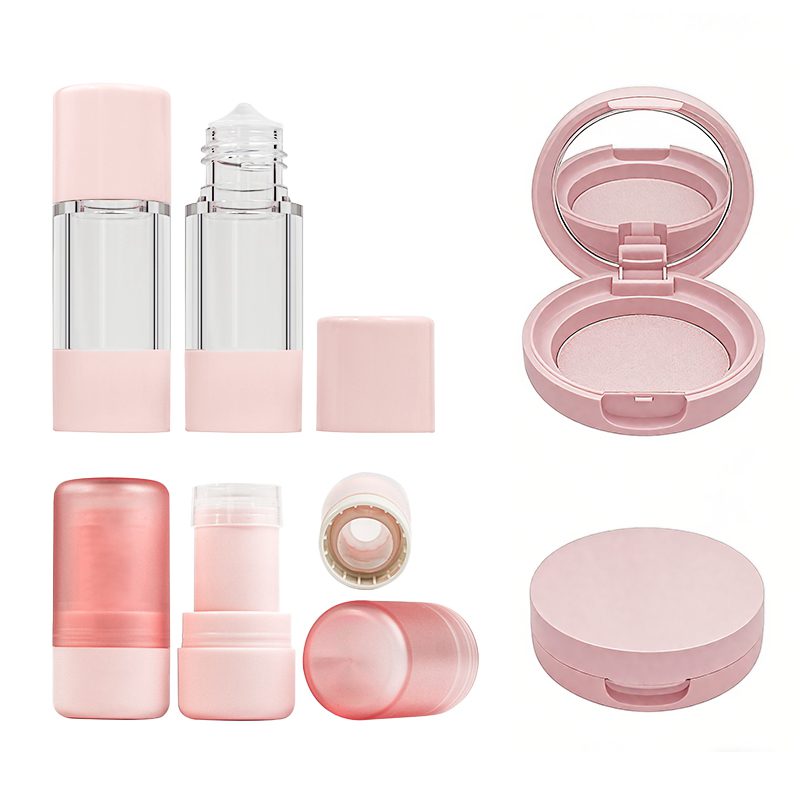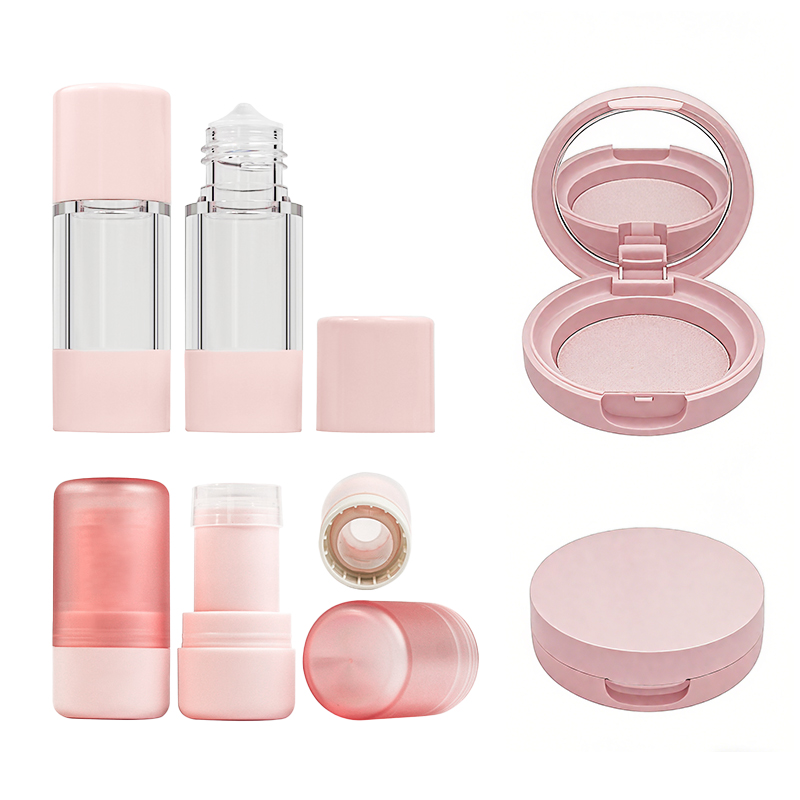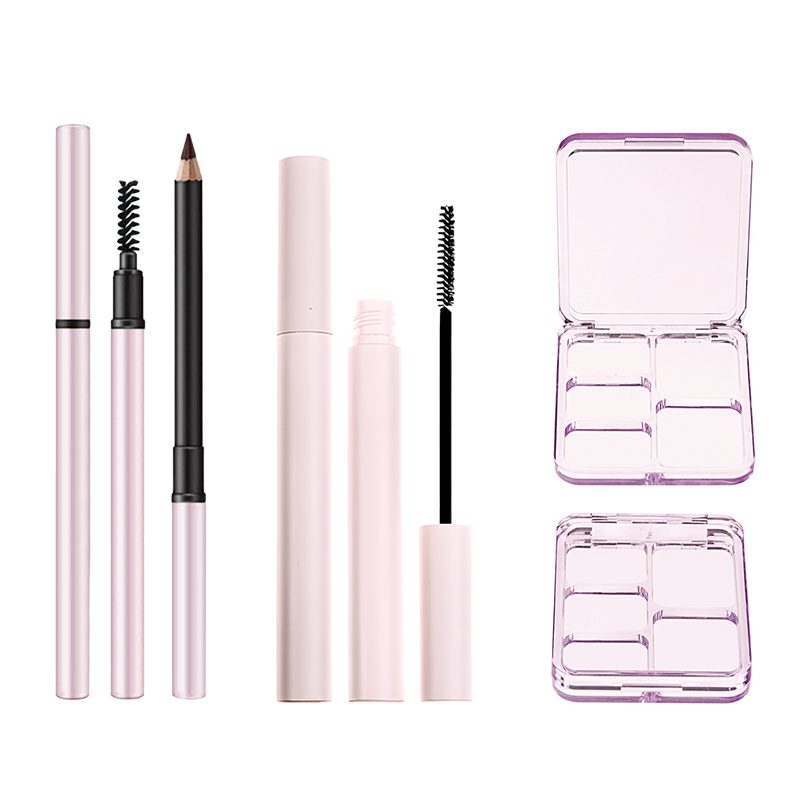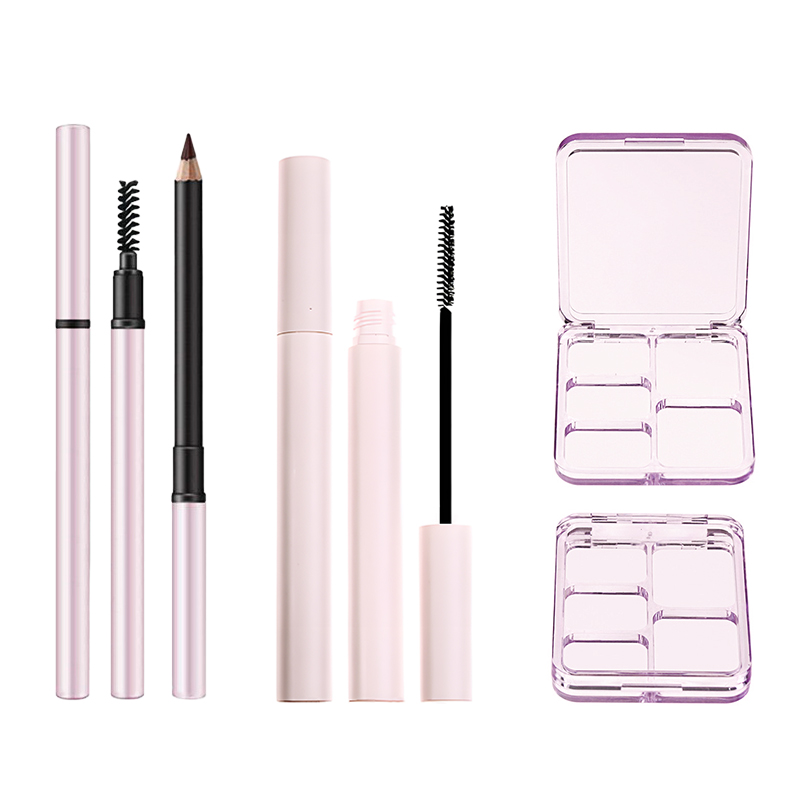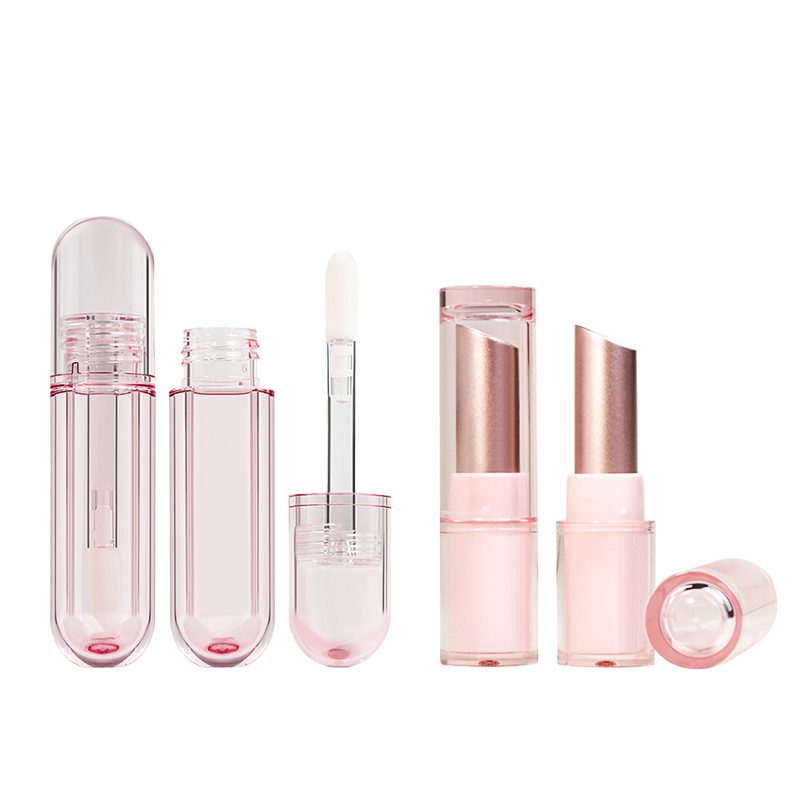Eco Friendly Makeup Packaging: Quick Guide to Best Practices
When it comes to eco friendly makeup packaging, the pressure’s on—and not just from consumers. It’s like the whole industry got a memo: “Go green or go home.” From indie brands to legacy giants, everyone’s scrambling to ditch plastic clamshells and swap in compostable compacts before shoppers start side-eyeing their products like last week’s leftovers.
But here’s the kicker—doing right by the planet shouldn’t mean torching your budget. Sourcing sustainable stuff in bulk can actually save you cash if you play your cards right (think reusable shipping bins and smart material swaps). Smart brands aren’t waiting around—they’re making moves now. So what’s holding you back?
Quick Notes on the Rise of Eco Friendly Makeup Packaging
➔ Sustainable Cosmetic Compacts: 78% of beauty brands now use eco-conscious compacts, driven by customer demand for greener choices.
➔ Smart Material Swaps: Biodegradable cardboard, recycled plastics, and seed paper are reshaping packaging with style and sustainability.
➔ Credibility Through Certification: Forest Stewardship Council Certification helps brands prove their commitment to responsible sourcing.
➔ Refillable vs Recycled Options: Refillable bottles cut waste long-term, while recycled lipstick cases support circular material usage.
➔ Eco Inks & Coatings Matter Too: Algae-based printing pigments reduce emissions without sacrificing visual branding appeal.
➔ Shipping Smarter Saves More: Carbon-neutral delivery programs and reusable shipping containers slash both costs and footprints.
Why Eco-Friendly Makeup Packaging Is The Next Industry Standard
Sustainable beauty isn’t a trend—it’s the new ground rule. From recycled content to carbon-neutral shipping, brands are rewriting the rules of glam.
78% of brands adopt Sustainable Cosmetic Compacts
- Refillable systems are becoming a go-to design for major cosmetics houses, drastically reducing waste and encouraging long-term use.
- Brands are favoring biodegradable packaging, especially for compacts, where material reduction is easy and impactful.
- Many have shifted toward using post-consumer recycled content, cutting down on virgin plastic usage across product lines.
This shift isn’t just about optics—consumers are putting their dollars behind it. Nearly eight out of ten leading cosmetic companies now offer sustainable compact options, making this more than just a niche movement.
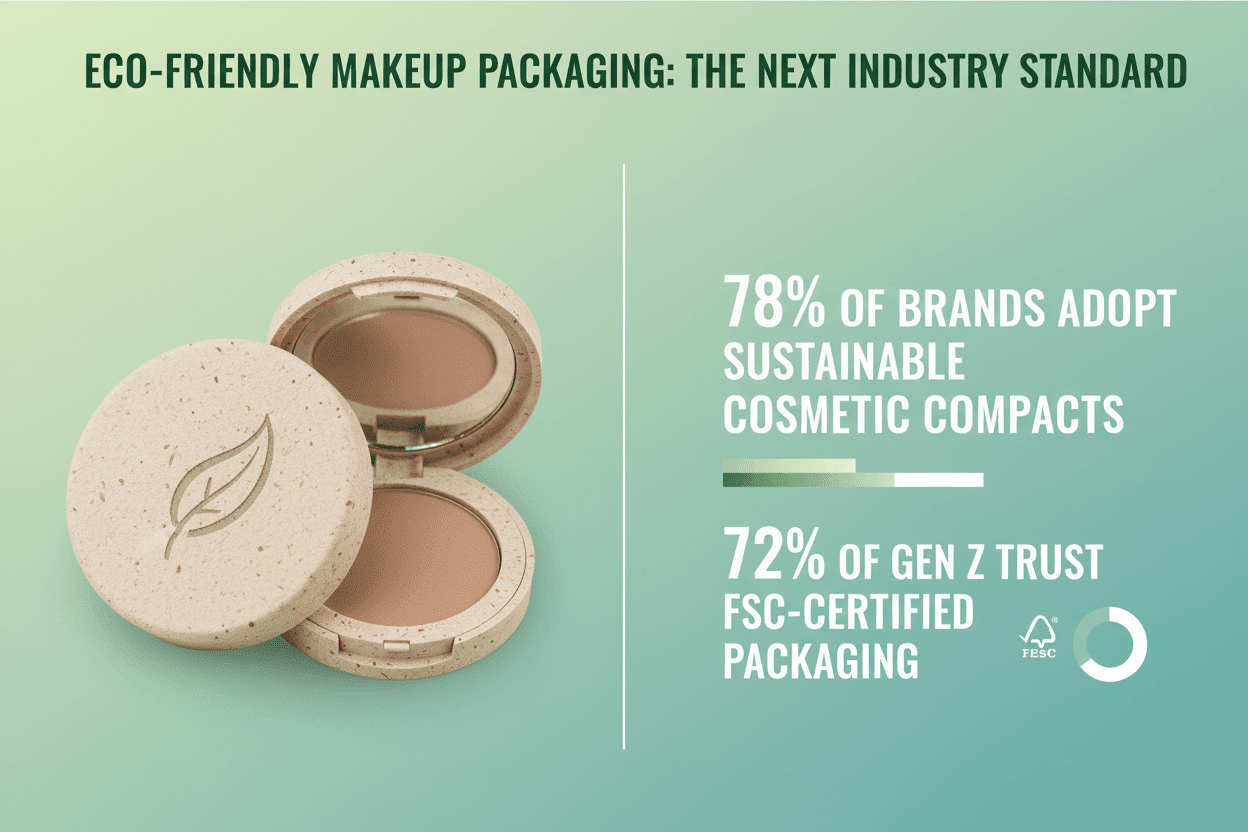
Forest Stewardship Council Certification: Building green credibility
The FSC label has become the gold standard for paper-based packaging materials in cosmetics. It guarantees that wood pulp used in boxes or labels comes from responsibly managed forests—not clear-cut zones or illegal logging operations.
According to Mintel’s Beauty & Personal Care Report Q1 2024, “72% of Gen Z shoppers say they trust FSC-certified packaging more than unverified eco claims.” That’s not just nice to have—it’s business-critical.
Brands that align with FSC standards often pair this with minimalist branding and plantable packaging, creating an experience that feels good from shelf to skin.
Cut emissions with Algae-Based Printing Pigments
- Traditional ink production relies on petroleum—messy, toxic, and not exactly Earth-friendly.
- Enter algae-based pigments: renewable, biodegradable, and wildly efficient.
- These natural inks slash carbon output while offering vibrant color payoff.
- They also pair well with other innovations like eco-friendly inks and compost-ready cartons.
- More indie labels are adopting these pigments as part of their clean-printing revolution.
It’s not just about looking good anymore—it’s about doing right by the planet while you’re at it.
Guilt-free deliveries via Carbon-Neutral Shipping Programs
• Logistics firms now offer carbon offsetting built into shipping costs—no extra steps needed by consumers.
• This aligns perfectly with brands using compostable packaging or minimalist mailers made from sustainable materials like bamboo fiberboard or mushroom foam.
• Carbon-neutral programs work hand-in-hand with clean manufacturing processes, ensuring sustainability isn’t lost during delivery.
Eco-conscious shoppers expect their purchases—from lipstick tubes to refill pods—to arrive without environmental baggage attached. One brand even reported a double-digit boost in customer retention after switching entirely to low-impact delivery models.
3 Eco Friendly Makeup Packaging Materials Explained
A fresh look at the coolest materials making beauty packaging smarter, cleaner, and way more planet-friendly.
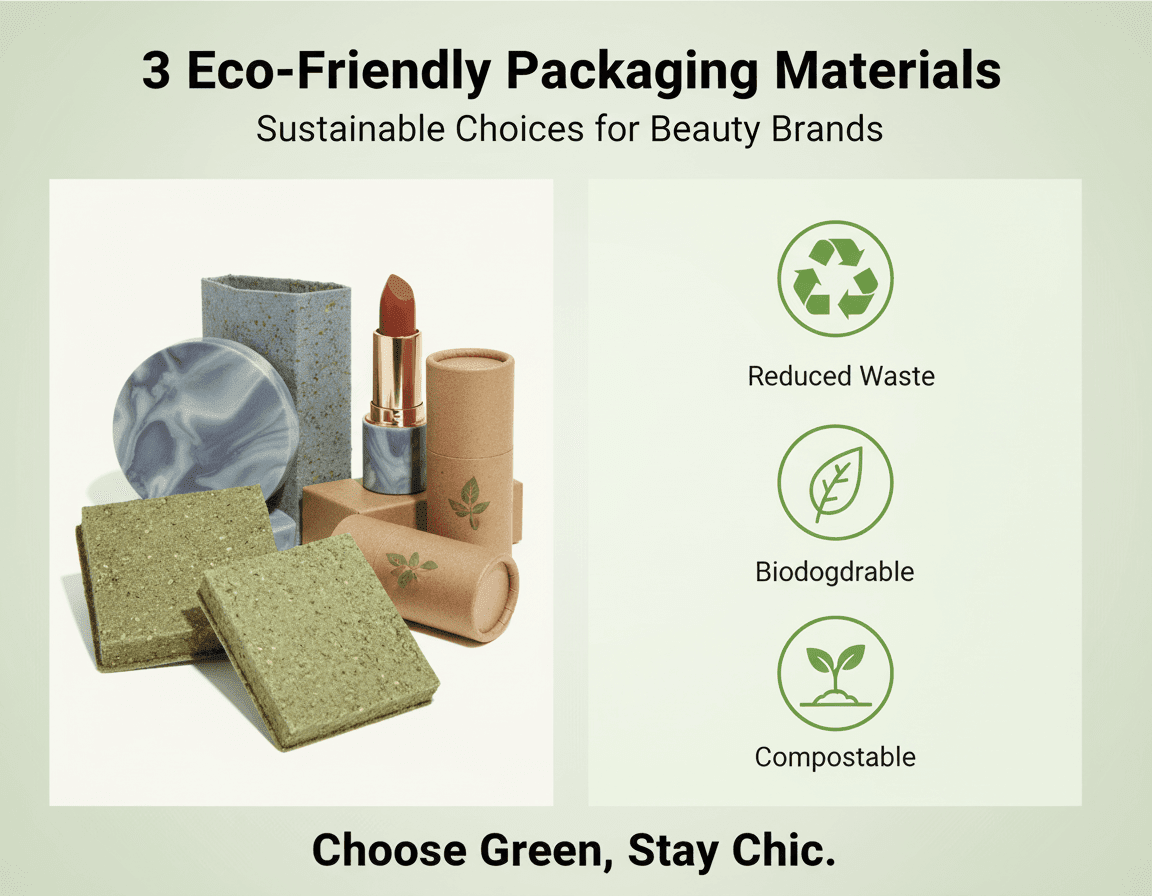
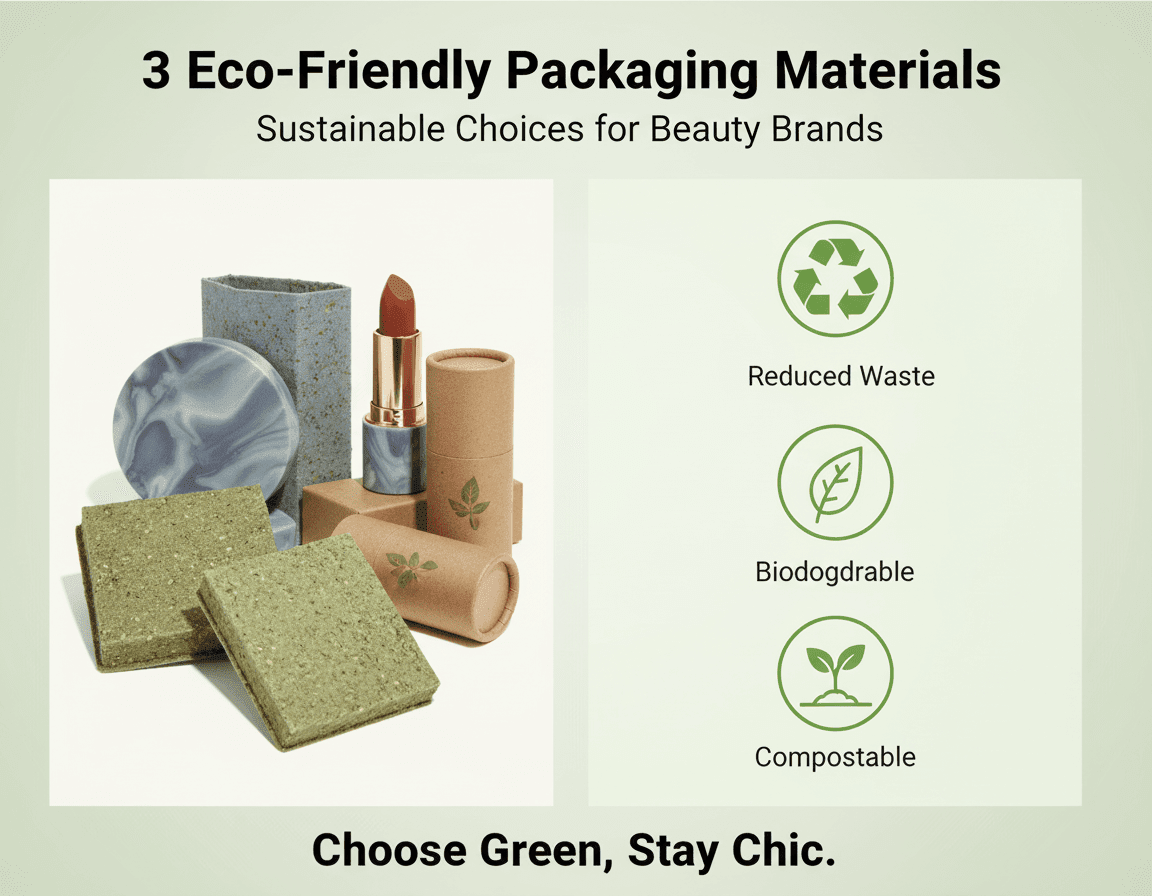
Post-Consumer Recycled Plastic: Eco-conscious durability
- ♻️ Made from previously used plastic products like bottles and containers.
- ✅ Helps reduce landfill waste and cuts down on new plastic production.
- 🔁 Supports a circular economy by keeping resources in use longer.
When brands swap in recycled plastic, they’re not just cutting corners—they’re cutting carbon footprints too. This stuff holds up like a champ, even under pressure, which makes it perfect for long-lasting cosmetic containers. Topfeel uses this material to build sleek compacts that feel luxe but tread light.
Biodegradable Cardboard Packaging for chic, sturdy cartons
- It’s biodegradable—so no guilt when tossing it out.
- Lightweight yet strong enough to protect delicate makeup items.
- Customizable shapes and prints keep things looking sharp on the shelf.
By using biodegradable packaging like cardboard, brands get both form and function without the environmental baggage of plastic shells or foams. Plus, customers love that earthy vibe—it screams clean beauty before they even open the box.
Engage customers with Compostable Plantable Seed Paper
• Grows wildflowers or herbs after disposal—literally turning trash into blooms
• Fully compostable; breaks down naturally without leaving toxins behind
• Adds a surprise-and-delight moment to unboxing experiences
This isn’t just packaging—it’s an experience. With plantable packaging, you’re not only wrapping your product in something cute—you’re handing over an invitation to grow something real. That kind of emotional connection sticks around long after the lipstick runs out.
Let’s be real: people remember the brands that make them smile and think green.
Refillable Vs. Recycled Makeup Packaging
Let’s break down how smart packaging choices like refills and recycled plastics are reshaping beauty habits for the better.
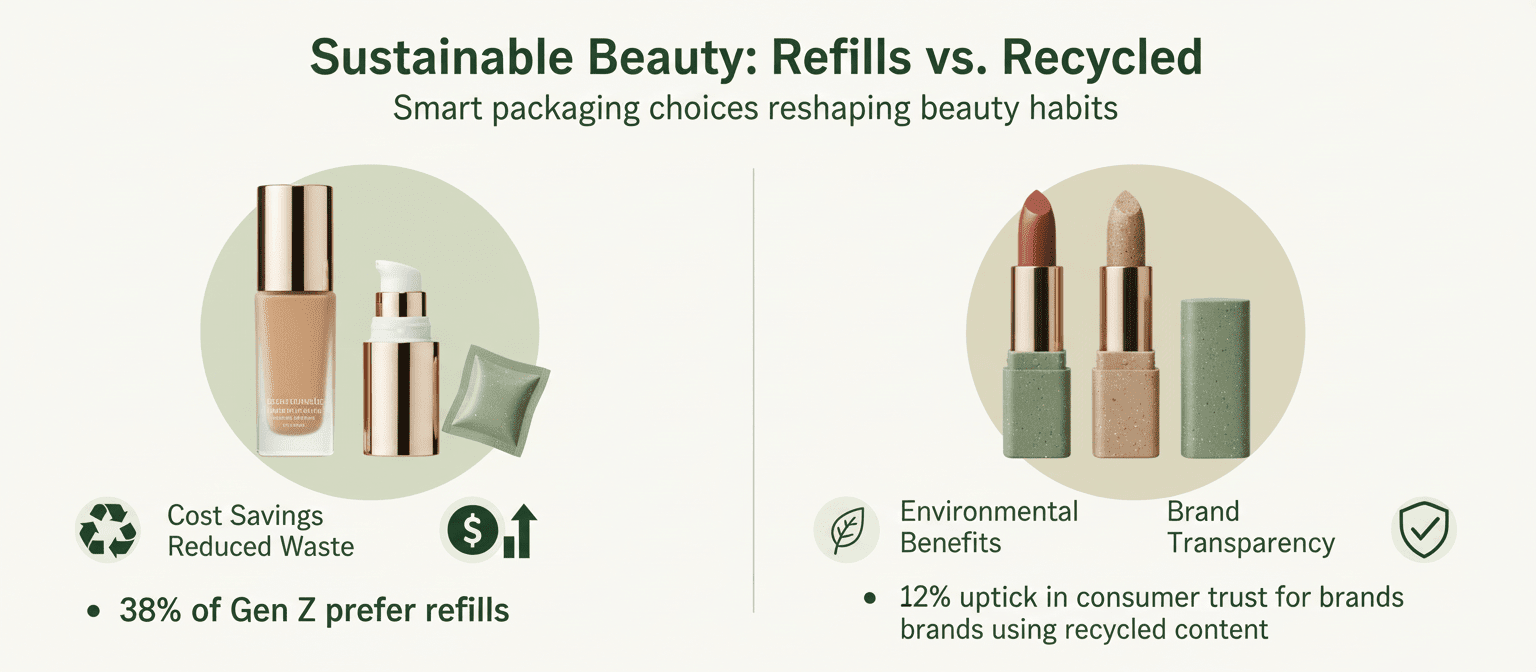
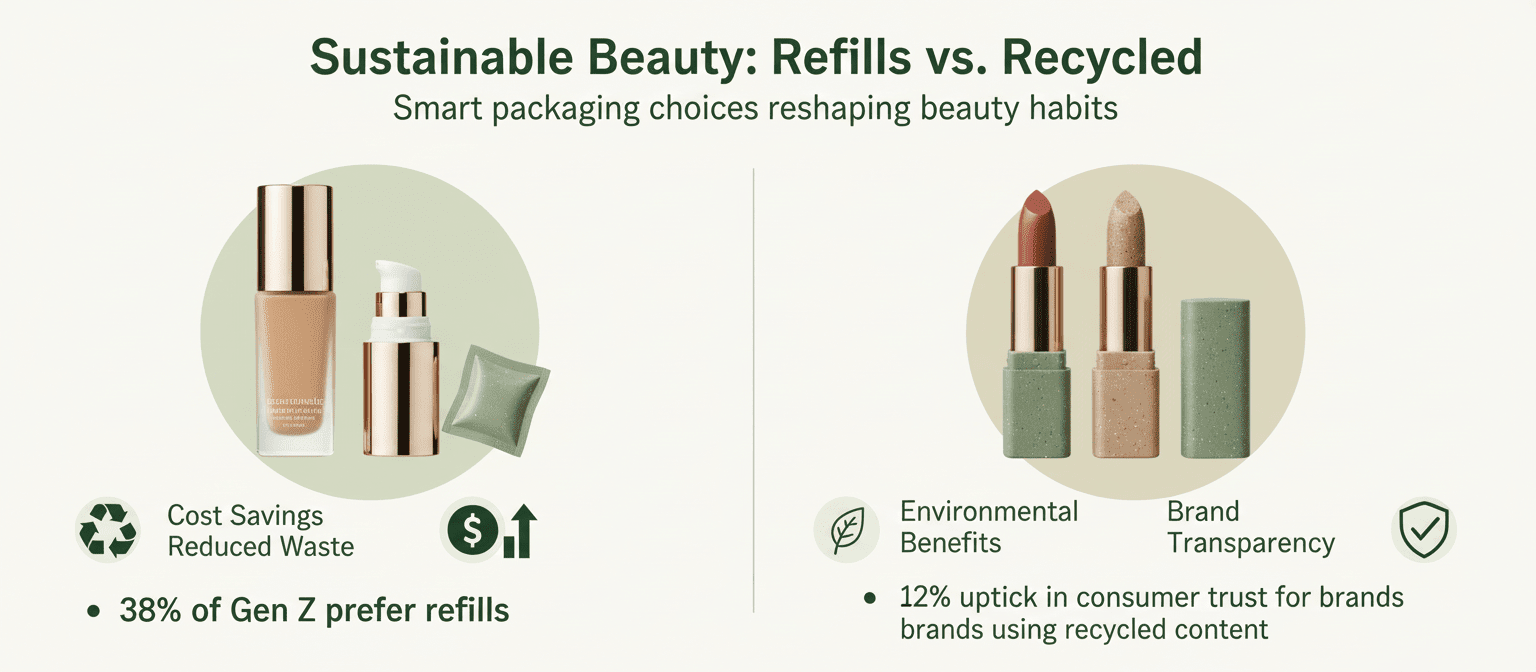
Refillable Foundation Bottles
Sustainable beauty isn’t just a trend—it’s turning into a habit, especially with refillable foundation bottles gaining traction.
• Brands are now designing sleek containers meant to be kept, not tossed—encouraging refillable packaging design that reduces single-use waste.
• Consumers love the cost savings over time, and it makes you feel like you’re doing your bit without sacrificing your look.
• According to NielsenIQ’s 2024 Beauty Sustainability Index, over 38% of Gen Z shoppers say they prefer refill options when buying liquid makeup products.
- You buy the bottle once.
- Use up the contents.
- Pop in a refill cartridge or pouch.
- Repeat—without adding more plastic to landfills.
This system supports sustainable consumption, nudging users toward smarter routines without compromising on quality or convenience.
And here’s the kicker: companies implementing this model often see improved brand loyalty because customers actually enjoy reusing something that feels premium yet planet-conscious.
Post-Consumer Recycled Plastic Lipstick Cases
Lipstick tubes made from post-use plastic? Yeah, that’s a game-changer for eco-conscious glam lovers.
• These cases reuse existing materials—think milk jugs, detergent bottles—to craft new packaging with less environmental impact.
• Reduces demand for virgin plastic production and supports better waste management practices globally.
• Often combined with biodegradable or compostable inserts for an extra green punch.
Grouped benefits of using these lipstick cases:
- ♻️ Environmental Edge: Cuts down landfill contribution while promoting circular use of resources.
- 💄 Aesthetic Appeal: Modern designs don’t skimp on style; you still get luxe vibes without guilt.
- 🌍 Brand Transparency: Companies embracing recycled material sourcing tend to disclose their supply chains more clearly—consumers dig that honesty.
- 📈 Market Movement: As per Euromonitor’s 2024 Cosmetics Sustainability Report, brands using post-consumer recycled content saw a 12% uptick in consumer trust metrics last year.
- 🔁 Circular Economy Push: Encourages producers and consumers alike to think about end-of-life product stages—not just purchase points.
- 🧠 Behavioral Shift Catalyst: Influences buying patterns by reinforcing small but meaningful eco-friendly decisions during everyday routines.
These lipstick cases aren’t just about looking good—they’re part of a bigger shift toward smarter systems built around reuse, recovery, and responsibility within the cosmetics world.
Struggling With High Packaging Costs? Opt Bulk Eco Options
Smart brands are ditching the fluff and going lean. Here’s how bulk moves and smarter packaging choices cut both waste and cost.
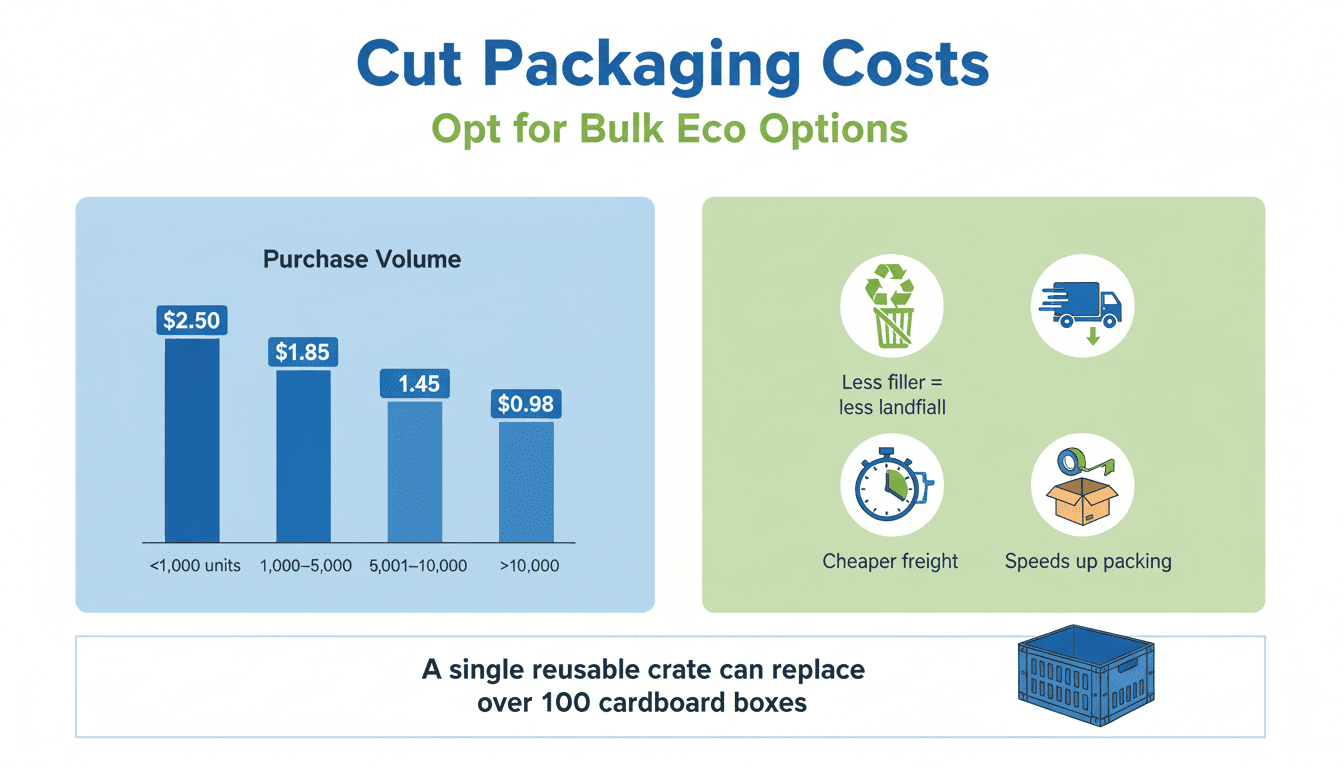
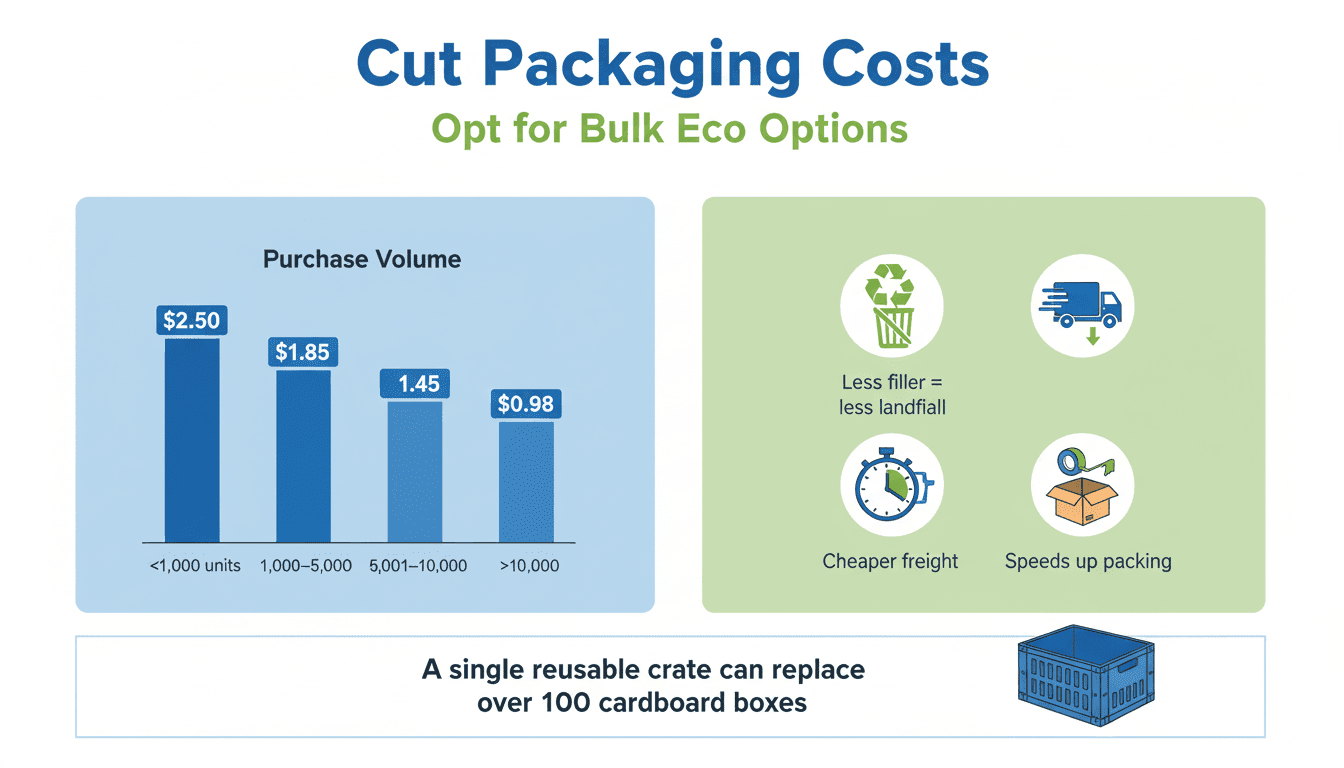
Bulk consolidation slashes per-unit costs
| Purchase Volume | Avg. Cost/Unit (USD) | CO₂ Emissions Saved (%) | Material Reduction (%) |
|---|---|---|---|
| <1,000 units | $2.50 | — | — |
| 1,000–5,000 | $1.85 | 12% | 15% |
| 5,001–10,000 | $1.45 | 19% | 22% |
| >10,000 | $0.98 | 27% | 30% |
Ordering in bulk doesn’t just feel smart—it is. When companies scale up their buys of wholesale packaging options, they slash unit costs dramatically. This isn’t just about price tags; it’s also about fewer shipments and less fuel burned. Brands sticking with small-batch orders? They’re leaving money—and a smaller carbon footprint—on the table.
How Minimalist Packaging for Shipping trims waste
• Less filler = less landfill
• Slimmer boxes mean cheaper freight
• Simpler designs speed up packing time
Minimalism isn’t boring; it’s efficient. By stripping down to the essentials using sustainable materials, brands reduce shipping weight and material use without sacrificing protection or style. Think clean lines, recyclable sleeves, no frills—just function with a side of sleek.
Savings stack up with Reusable Shipping Containers
♻️ A single reusable crate can replace over 100 cardboard boxes in its lifetime.
Reusable containers aren’t just a green gimmick—they’re workhorses that pay off fast:
- Upfront investment gets recouped after ~15 uses.
- They drastically cut recurring spend on one-time use materials.
- Used right, they shrink warehouse clutter and streamline returns.
A recent report by McKinsey & Company (2024) found that logistics teams using reusable systems saved between 12–18% annually on shipping supplies alone—proof that green packaging alternatives aren’t just good PR; they’re solid math too.
Brands looking to stay sharp while doing right by the planet are turning toward eco-friendly packaging strategies like these—not because it’s trendy, but because it works.
FAQs
Cost doesn’t have to clash with conscience. When ordering in volume, smart choices can trim both waste and expenses:
- Streamlined designs reduce material use—think simple tubes or jars without unnecessary layers.
- Bulk shipping in consolidated cartons cuts down on transport emissions and packaging overhead.
- Reusable containers for distribution centers add long-term savings while reinforcing your green message.
It’s more than a logo—it’s trust printed right onto your box. FSC certification tells customers that you’re not just using paper; you’re choosing forests managed with care, ethics, and renewal in mind. For shoppers who read labels like novels, this mark speaks volumes about your values before they even open the lid.
Not all “green” materials crumble under pressure—some hold up beautifully:
- Post-consumer recycled plastic keeps old waste out of landfills while offering strength that rivals virgin plastic.
- Bamboo adds a tactile warmth and natural charm that’s hard to fake—and it regrows fast after harvests.
- Sturdy cardboard made from renewable fibers offers structure without sacrificing compostability.
Absolutely—they shift habits over time. Instead of tossing another bottle into the bin every few months, users refill what they already own—a small ritual that builds loyalty while cutting single-use plastics dramatically across thousands of units sold annually.
The ink may seem minor—but it matters when you’re aiming for purity inside and out:
- Algae-based pigments skip petroleum entirely and come from regenerative sources.
- Soy-based inks break down cleanly during recycling processes.These choices keep toxins off packages—and away from sensitive skin by association.
Because sometimes trash becomes treasure. Seed paper transforms discarded boxes into wildflowers or herbs once planted—an act so simple yet poetic it turns unboxing into something unforgettable. It invites customers to grow something real from their purchase… literally planting beauty back into the earth where it began.


